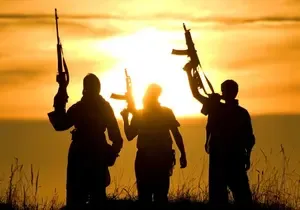Has ISI Chosen Babbar Khalsa to Head a Unified Terror Network?

Synopsis
Key Takeaways
- Babbar Khalsa International has been appointed by ISI to lead a new terror initiative.
- A significant recruitment campaign is underway to bolster Khalistan movement.
- Collaboration with gangster networks is critical for funding and recruitment.
- Advanced technologies like AI are being utilized in operations.
- Security agencies are on high alert due to rising threats.
New Delhi, Oct 21 (NationPress) The alarming connection between the Pakistan-based Babbar Khalsa International (BKI) and ISI to propagate terror in Punjab and its neighboring states has been exposed. As the Punjab police focus on combating drug trafficking and drone activities, a new concern arises: a significant recruitment initiative is about to commence.
The ISI has been striving to rejuvenate the Khalistan movement in Punjab, deploying every possible resource to realize this goal. Various terror organizations are associated with the Khalistan cause, including the BKI, Khalistan Zindabad Force, Khalistan Liberation Army, and Khalistan Tiger Force, among others.
There are a total of 41 groups involved, some of which sympathize with the cause while others resort to violence. In its efforts to revive this movement, the ISI concluded that all these factions should function under a unified command. Consequently, it appointed the BKI to take the helm, allowing the other groups to operate beneath its leadership.
Officials from the Intelligence Bureau indicate that having multiple groups addressing the same issue could complicate recruitment, creating confusion among potential recruits, who may hesitate to align with any single group.
The BKI was selected to spearhead this initiative due to its strength and extensive network, both in Punjab and internationally, surpassing that of other organizations. Additionally, the BKI collaborates closely with gangster networks, which are vital for the Khalistan movement, as gangsters provide funding and potential recruits.
For several years, the BKI has coordinated with gangsters, establishing a symbiotic relationship. The BKI has been sourcing funds through these networks and utilizing personnel for executing terror attacks.
Recently, the BKI, with ISI support, has ramped up its drone activities in Punjab, aiming to smuggle drugs and weaponry into the region. Profits from the drug trade are intended to fund the movement.
Officials reveal that this extensive recruitment drive has been in development for a considerable time but has faced challenges, as many in Punjab do not resonate with its ideology. Even older generations, weary from the violence of the 1980s, advise their children against engaging with the movement.
To bolster recruitment, the BKI believes that if ideological appeal proves ineffective, financial incentives or drug-related allure could succeed. This rationale underpins the aggressive push to deploy sophisticated drones, some equipped with Artificial Intelligence (AI) to enhance operational safety. Such technology has enabled the BKI and ISI to safeguard drones from destruction.
With the BKI now fully in charge, both Punjab police and intelligence agencies find themselves under significant strain. State and central agencies are collaborating closely to counter this threat.
Officials anticipate a busy period ahead, given the ISI's escalating efforts concerning the Khalistan movement. The manner in which the BKI is mobilizing its resources across Pakistan, Canada, Punjab, Germany, and the UK raises alarm for security agencies. The BKI is designated as a banned organization in Canada, India, the European Union, Japan, Malaysia, the United States, and the United Kingdom.









